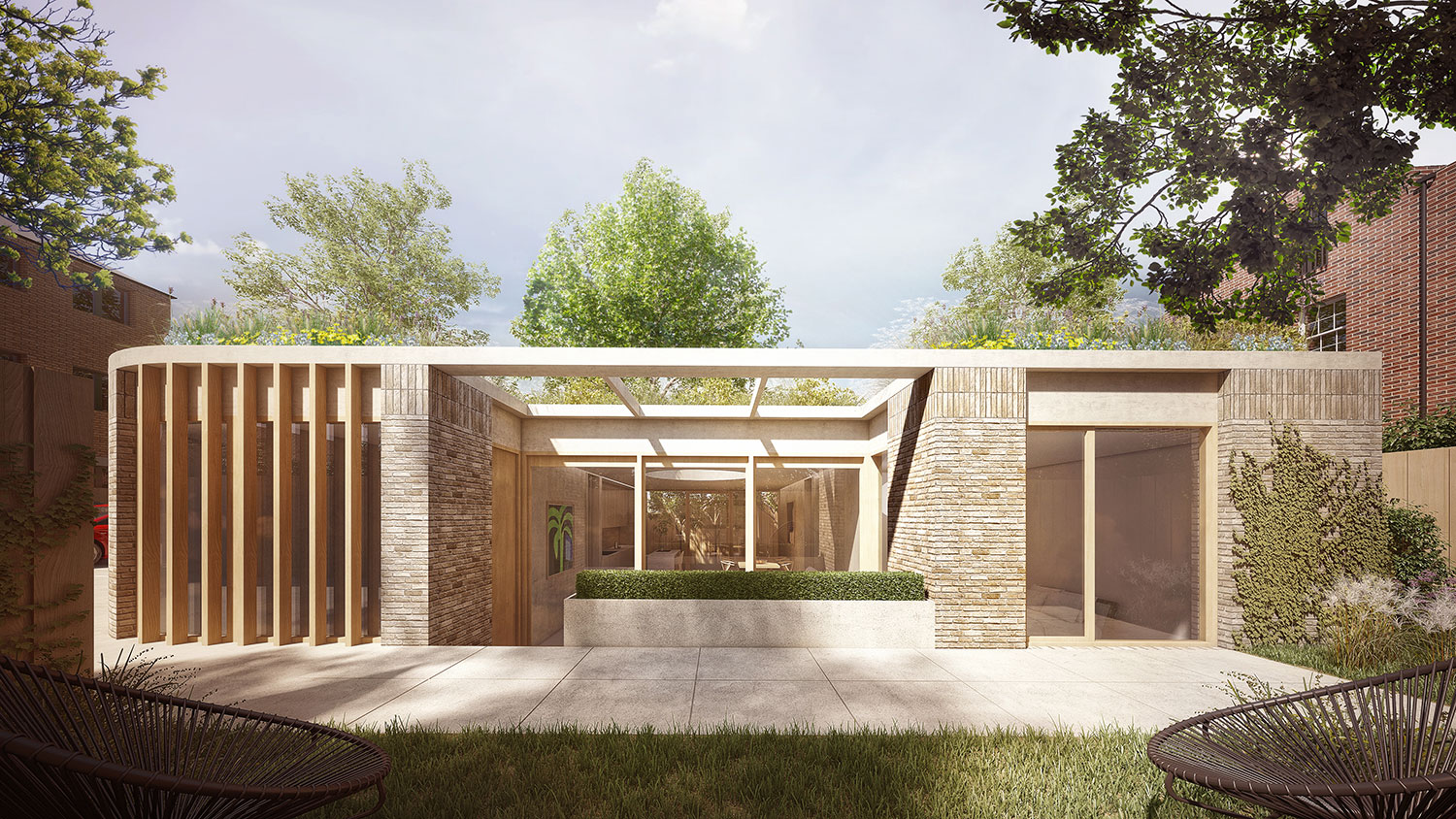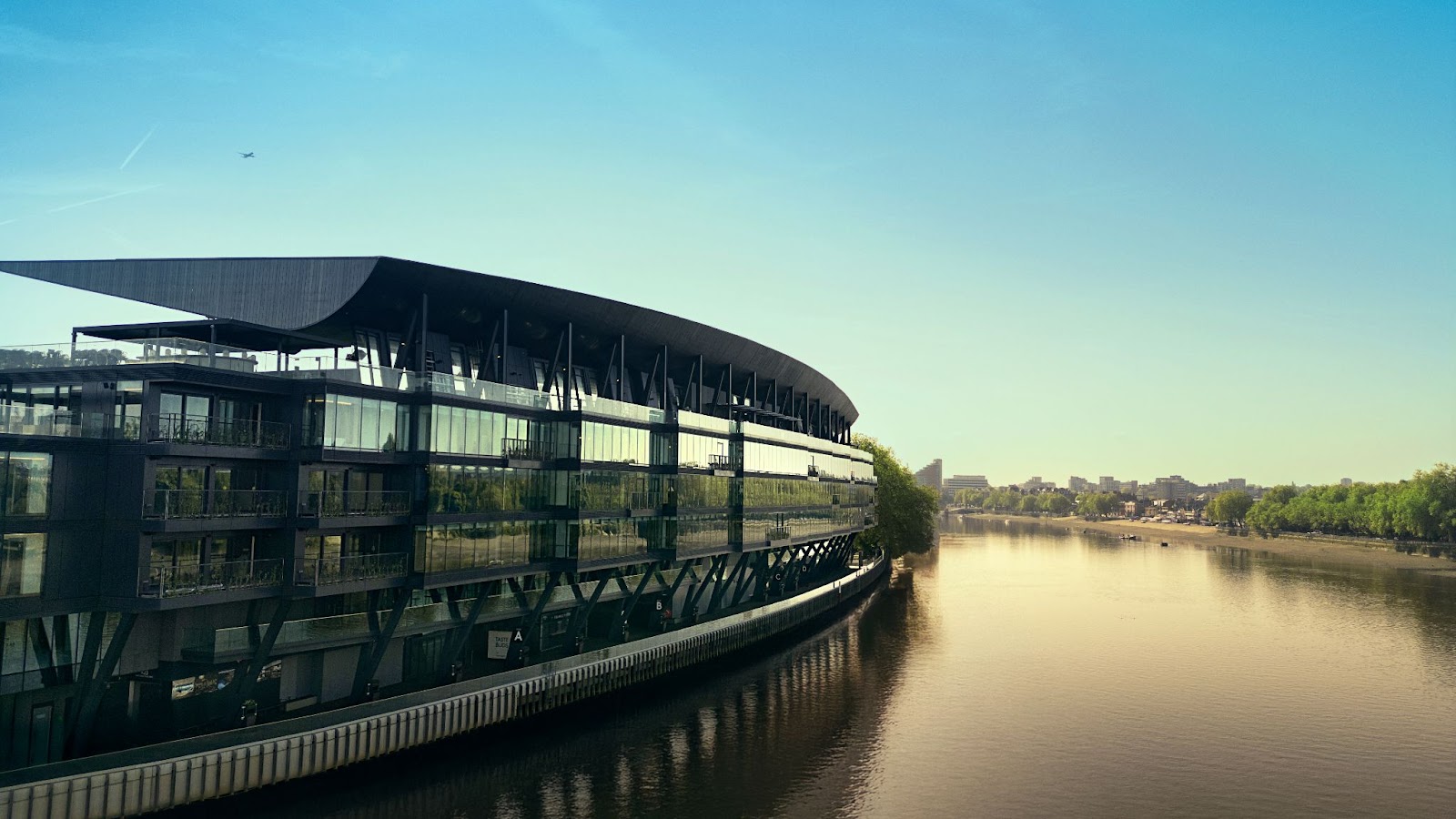Putting your money where your mouth can be daunting. Based on their own experience, Charlie Caswell and Adam Dainow offer advice on how to make the transition from architecture to setting up a design-led development company.

The five-person team photographed at the SelgasCano-designed Canteen building at the Greenwich Design District in East London. Clockwise from top: Clockwise from top: Charlie Caswell, director; Adam Dainow, director; Hugh Gatenby, development analyst; Melanie Blainey, development analyst. Not in shot: Sam McMillan, architect and development analyst.
Adam Dainow and Charlie Caswell met while studying Architecture at Sheffield University, going on to work at practices in London. In 2017 they stepped away from the industry to establish Caswell&Dainow, a development company that sets its sights at unlocking small sites. With a “design-first agenda”, the pair argue how switching to the client side has allowed them to work with the best up-and-coming architectural talent and manage quality at every step of the process.
The transition from architecture to development is not uncommon, but unsurprisingly, comes with unique challenges. “There is a misconception among architects that being a developer is easy money,” says Dainow, “but this is far from the reality. We put everything we had on the line, but we knew the risks were worth it if it led to our dream careers.” The “secret” he says, is not giving up. “We literally looked at and analysed hundreds of potential sites before we got our first break.”
Working in tight urban sites in and around London, the developers have found how their architectural education and background has played to their hand, with all of their sites being heavily constrained.
“We try and find the sites typical developers would overlook or think carry too much planning risk. That’s what gives us our edge, so we have found our niche specialising in the cracks and in-between spaces of London,” describes Dainow.
“As an architect you can imagine something the instant you see the land,” adds Caswell. Many of the plots we look at are especially narrow or awkwardly shaped, the kind of problems most creative thinkers relish.”
“Having bought a site, we take great care to match the project with the most suitable architecture practice and our experience in the industry plays to our hands as clients. We love to support emerging talent that will come up with fresh and exciting designs to set our developments apart.”
After finding how being the client has allowed them to pursue their interests and career goals, Caswell and Dainow want to help others considering the switch from Architect to developer.
“When we meet Architects, we realise they often know little about how developers work, which seems like a massive disadvantage. It rarely gets talked about through education and developers can keep their cards close to their chest. Even if Architects don’t want to become developers we think properly understanding the process can dramatically improve how they win work and earn better fees” says Dainow.

‘Peckham Place’ (above) is a joint venture with London investor JD Phillips Property. The project aims to improve an outdated apartment block site on a road in Peckham, South London by introducing a carefully crafted sunken mews building set around a secluded private garden. The project was recently granted planning permission.

Interior render of the proposed Peckham Place.
For practicing architects who have ever considered undertaking their own developments, here are seven guiding tips courtesy of Caswell&Dainow on how you can leverage your creativity and avoid some common mistakes.
1. Don’t give up: it takes seven years to become an architect so don’t expect to become a property developer overnight. We look at hundreds of sites for every one that is realised. Learn from rejection and don’t overpay out of desperation.
2. Don’t go it alone: learn from your developer contacts. Most architects work for developers but know very little about the profession and their day-to-day. Take them for coffee and ask them questions. Make sure you’re informed before making the jump.
3. Stand out from the crowd: design-led developments are rare. The creatively minded architect can offer something a bit different. This will help your finished product stand out from the competition and allow you to offer it at a premium.
4. Don’t blow the budget: it’s easy for architects to be seduced by detail, but unnecessary expense might price your property out of the local market. Focus on the basics of volume, space, light and proportion.
5. Know your market: understand the area you’re building in. If your site is in a suburban area with family homes, it’s unlikely there will be appetite for a one-bed skinny home without car parking.
6. Pay attention to planning: the architect’s understanding of the planning process is a key asset. You might find a site with failed planning available at a discount, which you can unlock with a creative approach.
7. Take a risk: architects are trained to be risk averse. As a developer you don’t have a monthly income, which can be scary, but it’s balanced by the satisfaction of being your own client and the financial reward for a job well done.
So is the risk worth it? Caswell firmly believes so. “Investing in your passions can lead to your dream job. With full control over your work you can be the difference you want to see in the city and express yourself as a designer.”














